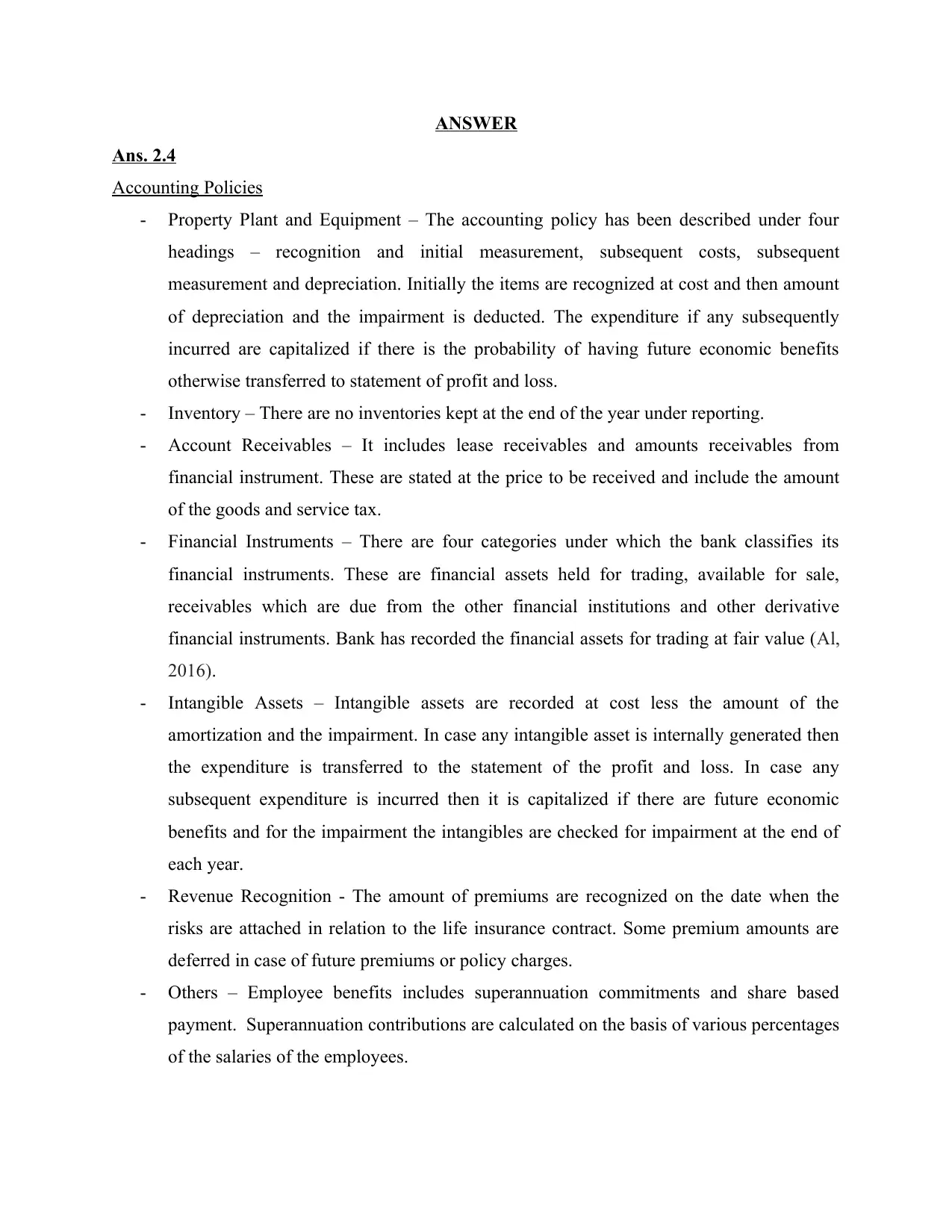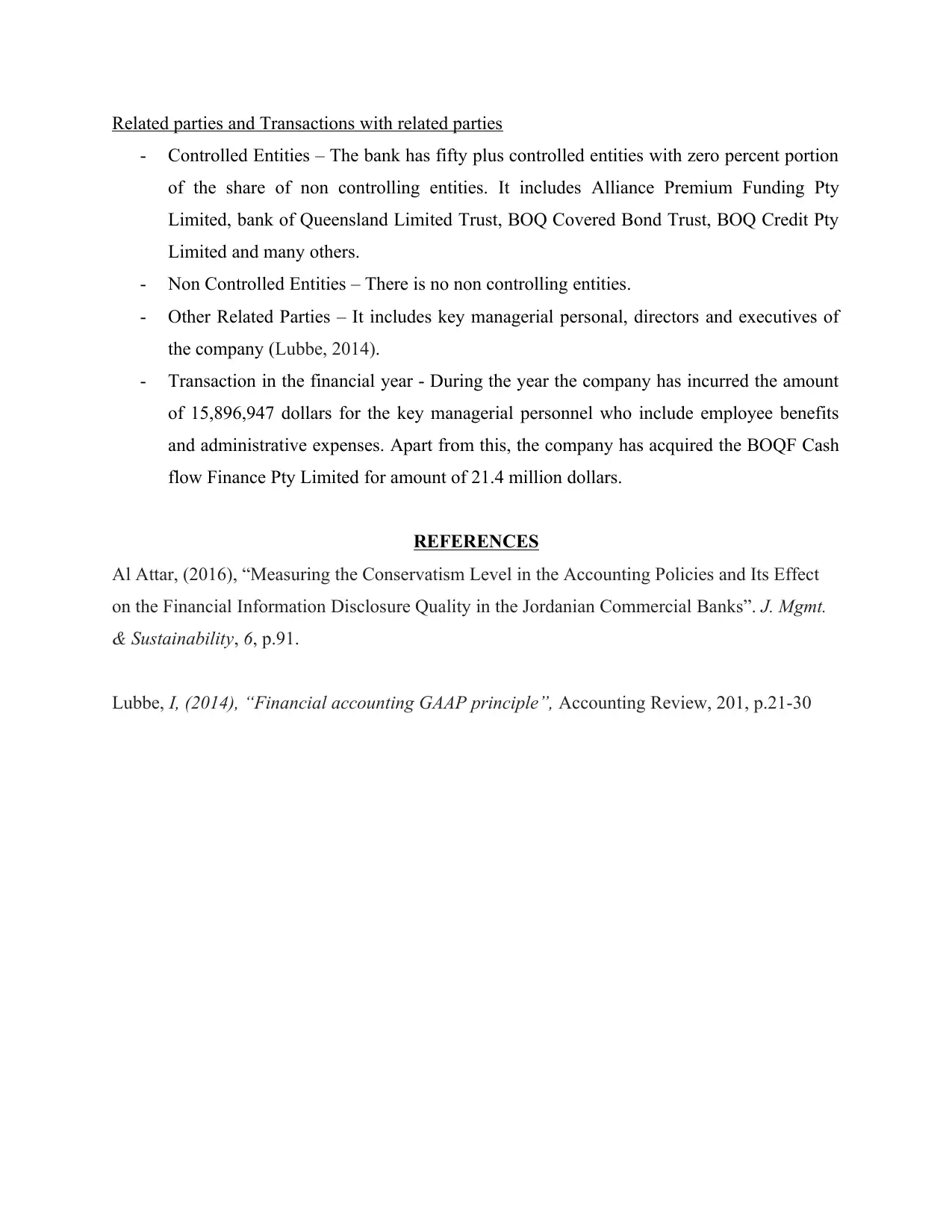Accounting Policy Report: Property, Plant, Equipment & Recognition
VerifiedAdded on 2023/06/04
|2
|549
|295
Report
AI Summary
This report provides a detailed analysis of accounting policies related to property, plant, and equipment, inventory, accounts receivables, financial instruments, intangible assets, and revenue recognition. It covers recognition and measurement criteria, subsequent costs, depreciation, and impairment. The report also discusses employee benefits, related parties including controlled and non-controlled entities, and transactions with key managerial personnel. Specific transactions, such as the acquisition of BOQF Cash flow Finance Pty Limited, are also highlighted. The document references Al Attar (2016) and Lubbe (2014) to support its analysis. Desklib offers similar solved assignments and past papers for students.
1 out of 2








![[object Object]](/_next/static/media/star-bottom.7253800d.svg)